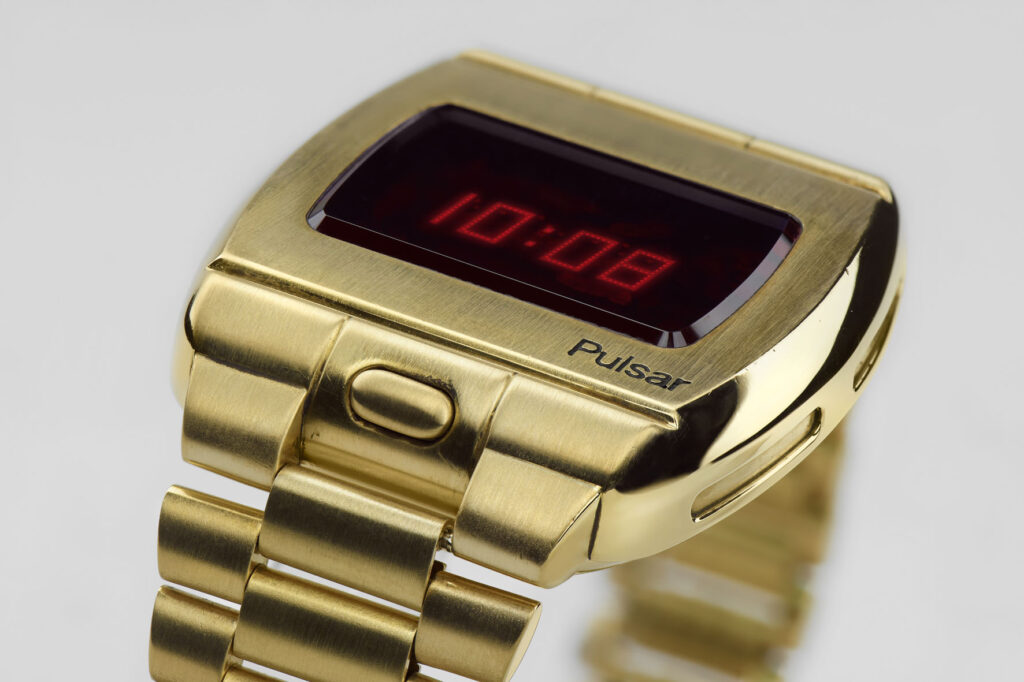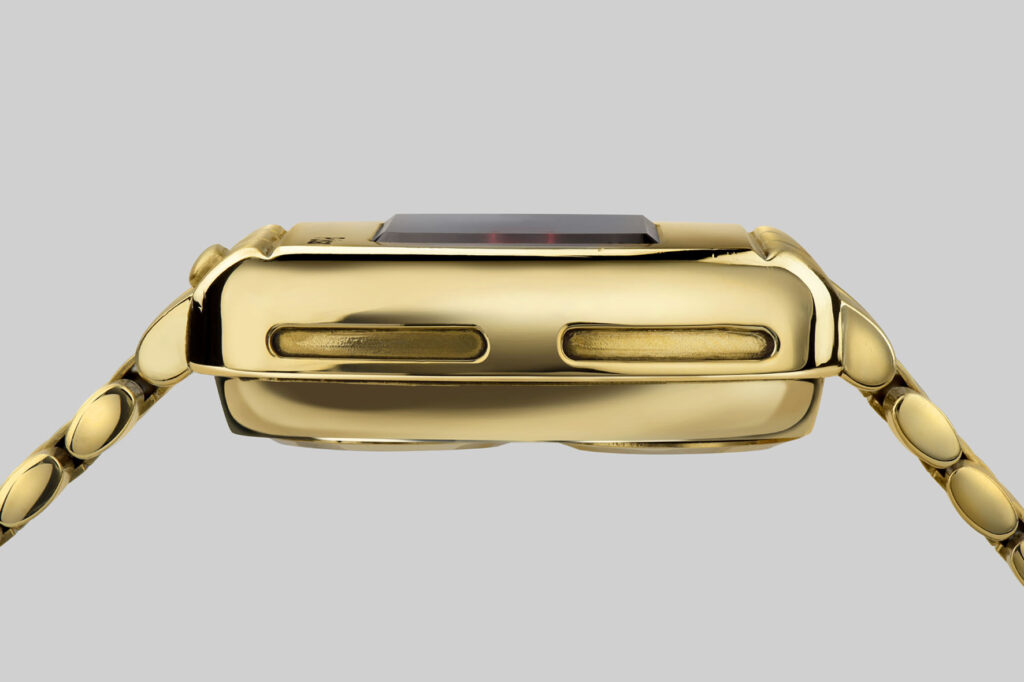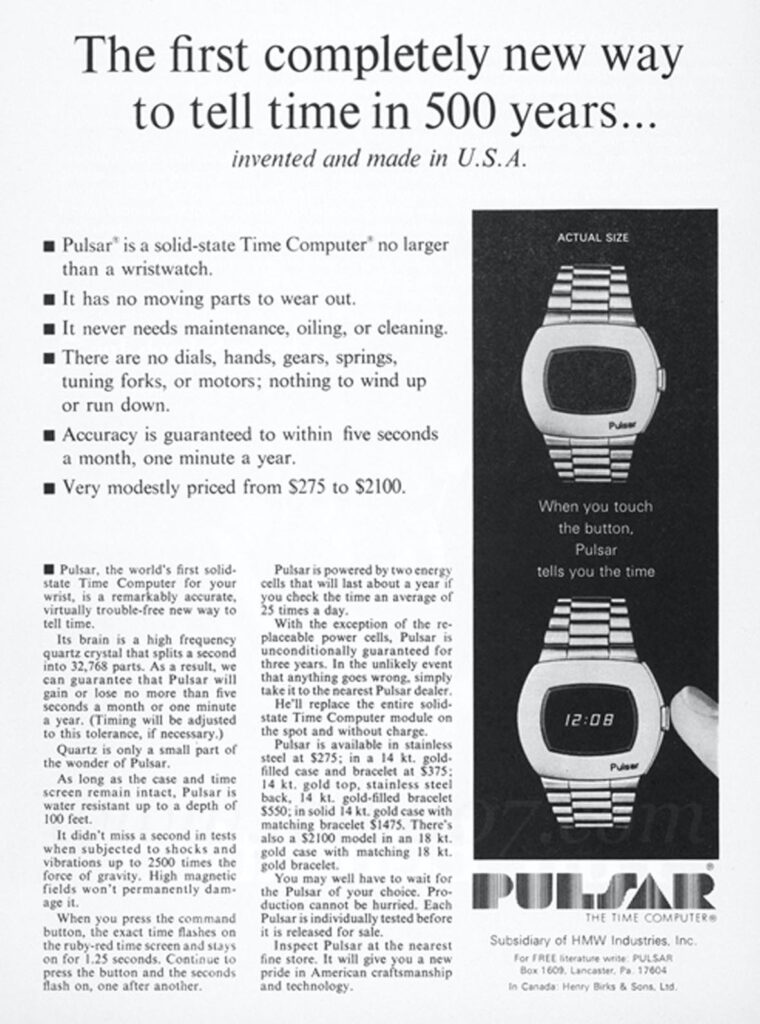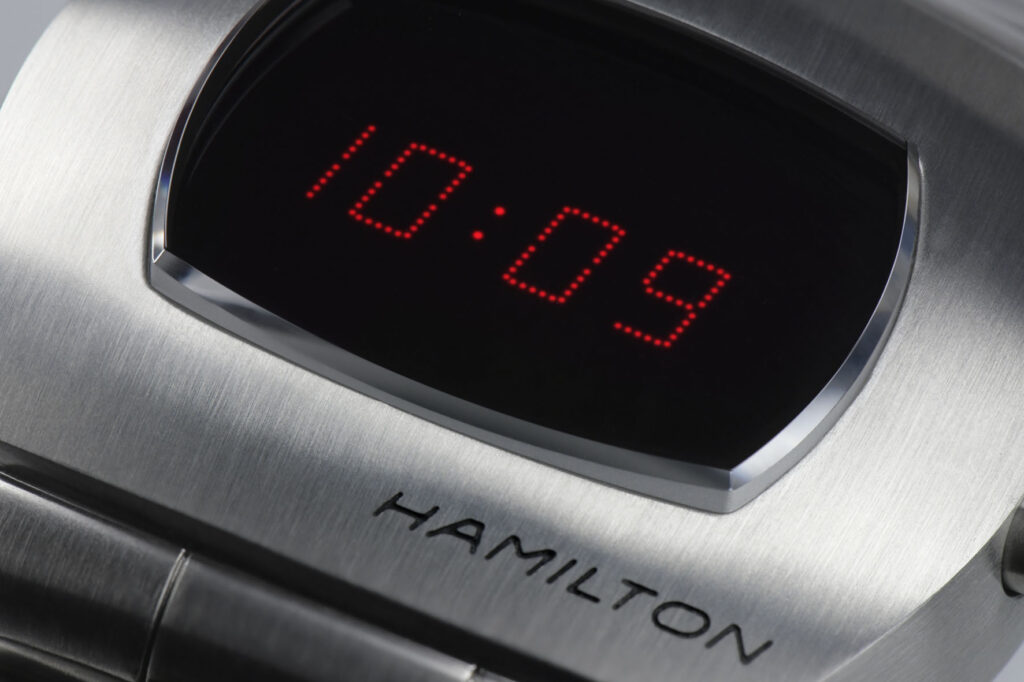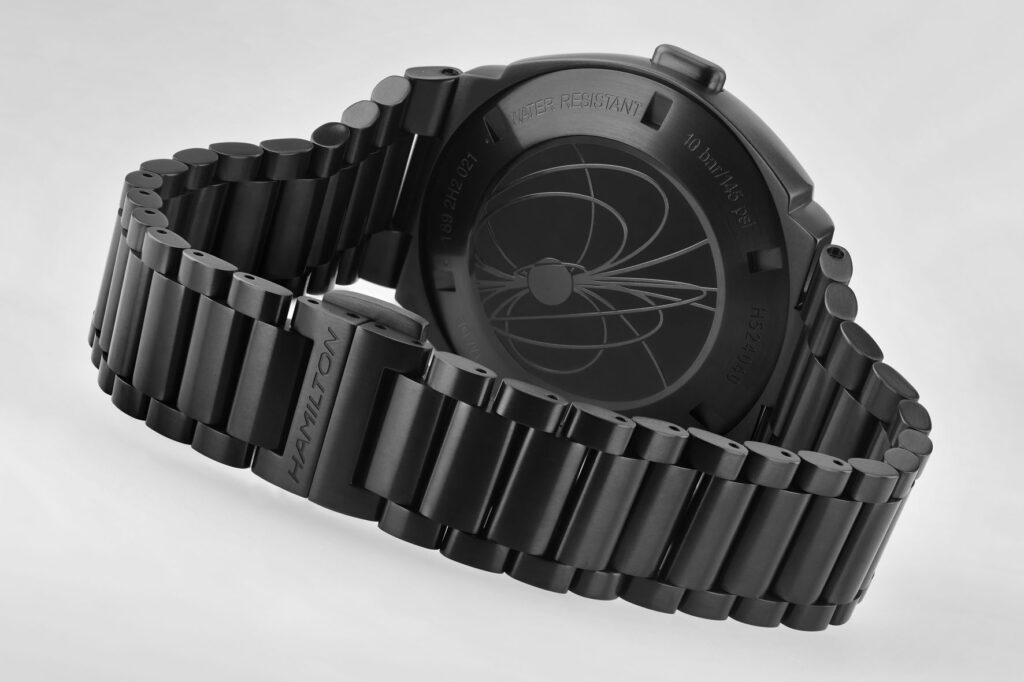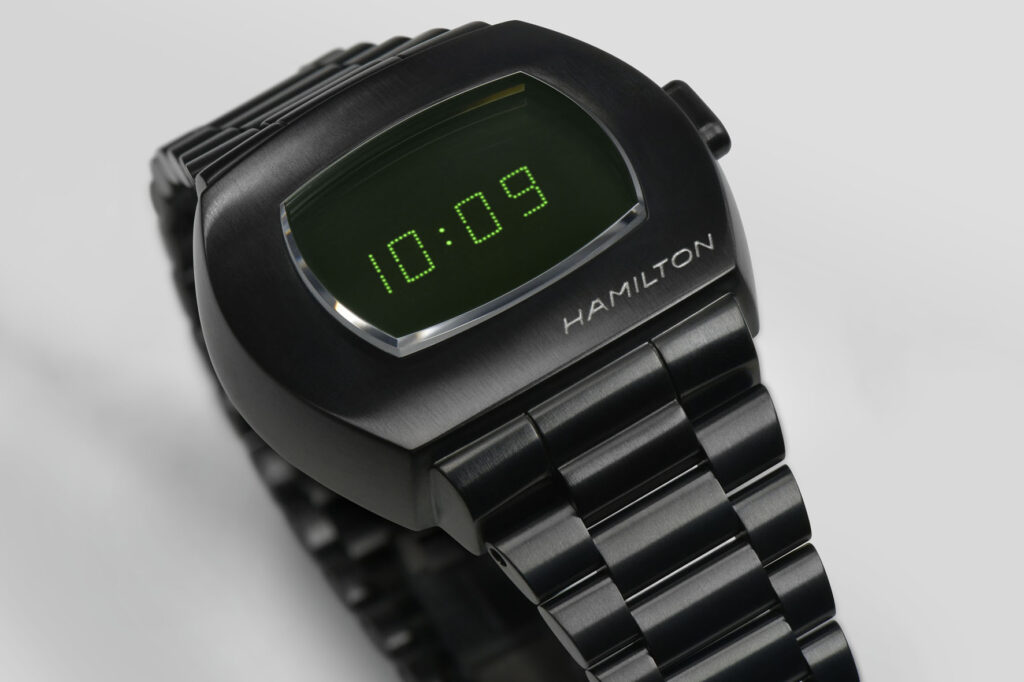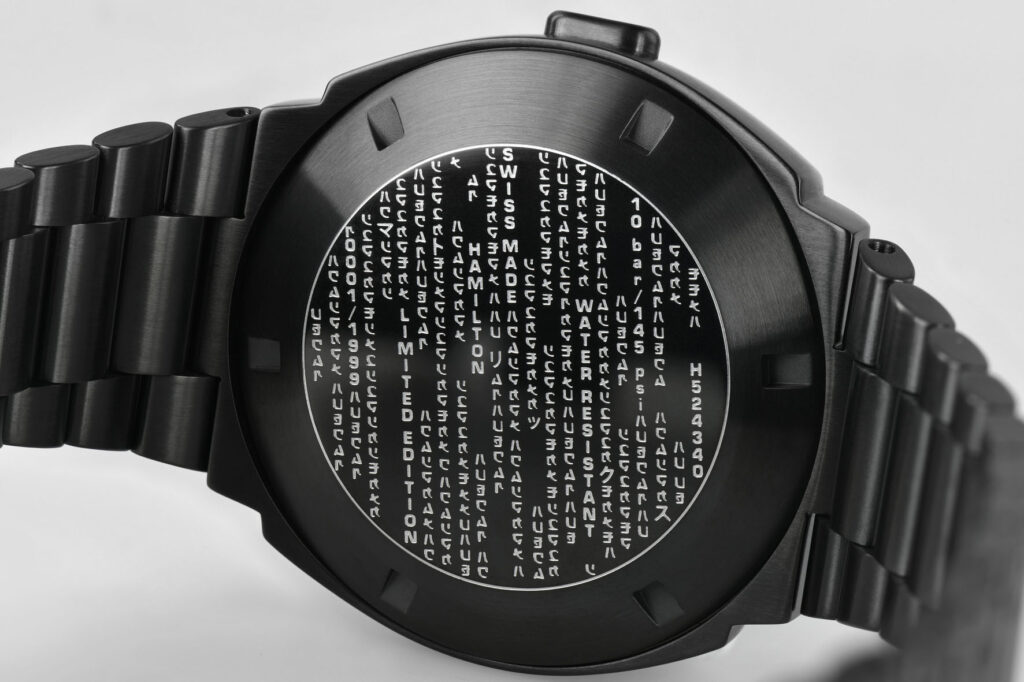Hamilton PSR: Digital Spirit
13 September 2022In the watchmaking industry, the 1970s are mainly remembered for the great design experimentations that followed the outbreak of “luxury sport watches” – born in the wake of Audemars Piguet’s Royal Oak, with its geometric case and integrated steel bracelet – and for the so-called quartz crisis, which brought the Swiss mechanical watchmaking industry to its knees.
One of the greatest quartz successes was that of digital watches, among which one in particular had combined cutting-edge design and new technologies. With, in addition, the merit of coming from a historic mechanical watchmaking manufacture. That is, the Hamilton’s Pulsar, which the brand has revived with the new PSR after about 50 years. But let’s go in order.
HAMILTON PULSAR, SON OF THE 1970s
The watch was first announced on May 6, 1970 – two years before it got on the market – at a press conference held at the Four Seasons hotel’s restaurant in New York. The name, Pulsar, was reminiscent of pulsating neutron stars that emit beams of radiation at ultra-precise frequencies. A reference to the science-fiction culture that had developed between the 60s and 70s, witnessing the US and the USSR challenging each other for the conquest of space.
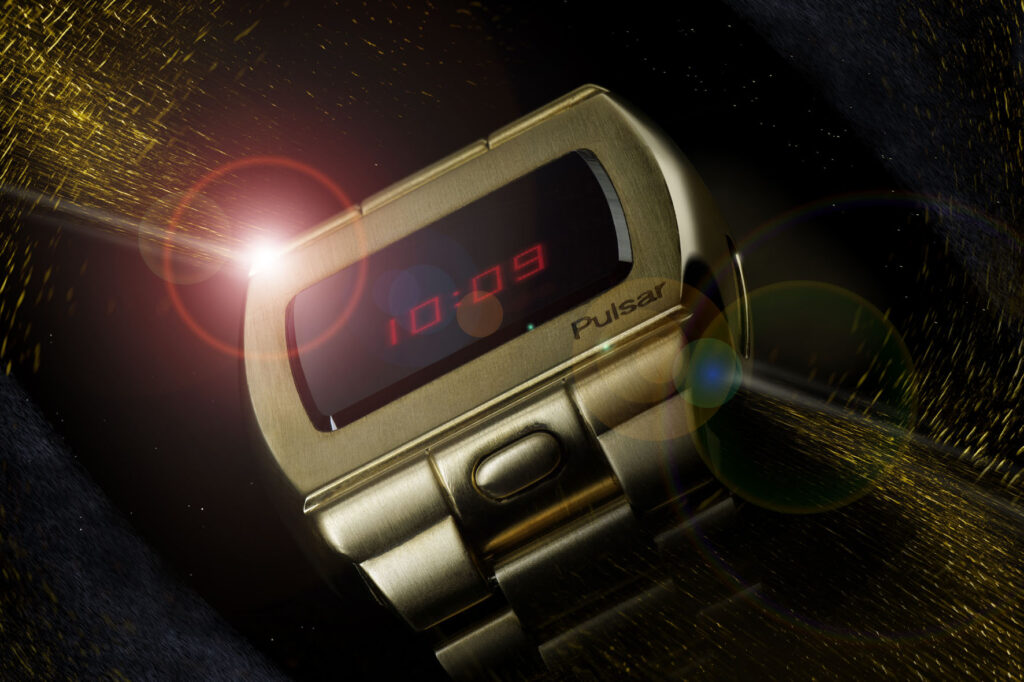
The original Hamilton Pulsar Time Computer presented itself as one of the most revolutionary watches. Once the P1 model became available in 1972, it was discovered that it was also among the most expensive: its price of $2,100 (the case and bracelet were made of solid gold and the watch was regulated thanks to a magnet hidden in the bracelet) made it more expensive than a gold Rolex.
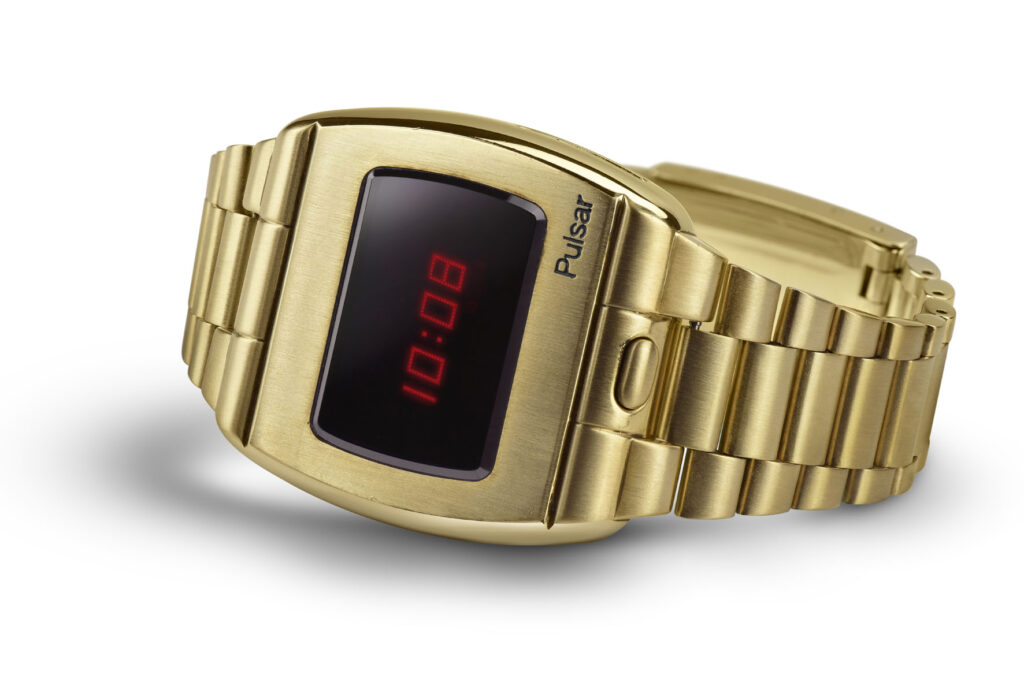
The Pulsar captured the public’s imagination to almost unprecedented levels for a wristwatch. In 1973 it was the turn of the Pulsar P2, with a more rounded case and an improved microchip; while the P1 was made in 400 pieces, the P2 was produced in industrial quantities and was a massmarket success, even if the watch later had a short life.

The production stopped in 1977, as its bright red LED display quickly lost ground to watches with LCD displays, once they were released. The reason is quickly explained: the battery life.

A watch with an LED display is very energy-consuming, unlike one with an LCD display. To save energy, the LED watches were designed so that the display was turned on by pressing a button on the side of the case, while the LCD watch display was always on. For Hamilton’s Pulsar Time Computer, this operation was intrinsic to the pleasure of owning and using one: activating the LED display had a different “wow” effect than turning the wrist to look at an analog dial.
SUCCES BEYOND EXPECTATIONS
Its release sparked a collective mania. Don Sauers, in his book on the history of Hamilton, “Time for America: Hamilton Watch 1892-1992,” recalls some episodes: “Consider the customer who bought the last Pulsar in stock at Tiffany’s in New York just before Christmas, 1972, and received two offers for the watch before he could get out of the store. Or the plight of Senator Bennett of Utah, who wanted to be the first member of the U.S. Senate with a Pulsar, and then discovered in a committee meeting that Senator Mike Mansfield already had one. And there were rumors that one of President Nixon’s daughters had dropped into Tiffany’s and picked out a Pulsar as a Christmas gift for her father.”
That success also earned the watch a cameo on Roger Moore’s wrist as James Bond, in the movie “Live and Let Die.” A success that prompted Hamilton to relaunch the timepiece with the new PSR, a watch that in its shape is very faithful to its 1972 ancestor. In essence, it is only been modernized, and remains a must have.
HAMILTON PSR: THE TERRIBLE “GRANDSON”
The relaunch of the Hamilton PSR in Spring 2020 was a success. The steel model has become part of the brand’s portfolio, while the 1,970 pieces of the limited edition with yellow gold PVD treatment were soon sold out. The uncommon cushion shape of the original Pulsar case was taken up in the PSR and gives it an elegant vintage look.
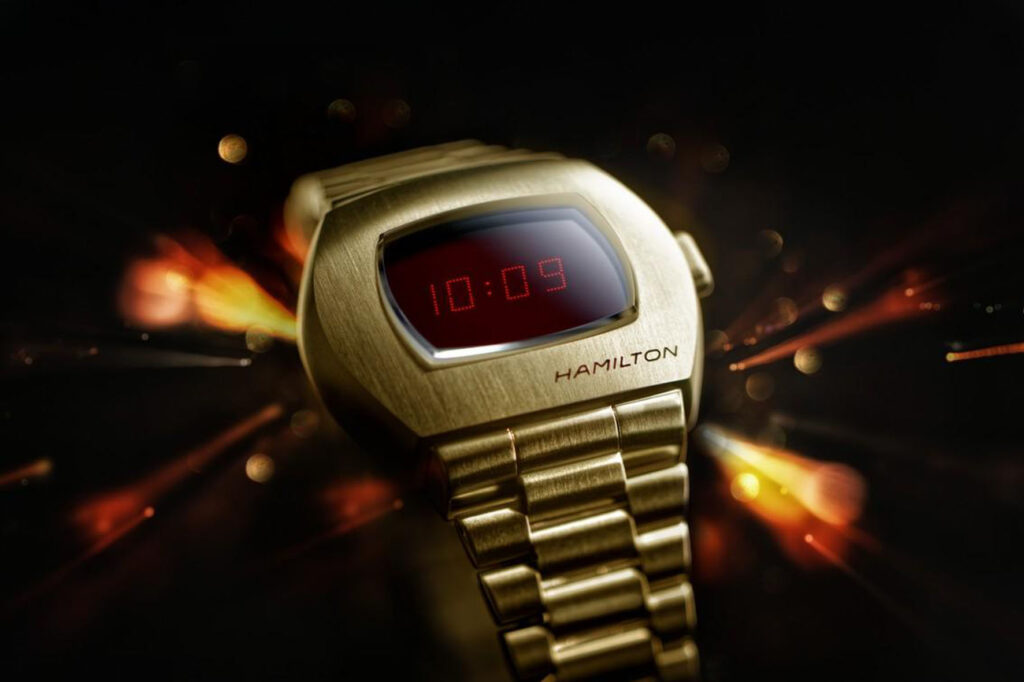
The digital display with red numbers is protected by a sapphire crystal and framed by the 40.8 mm case, water resistant to 10 bars. The watch is completed with a classic stainless-steel bracelet.

The new display is different from the original version’s: it is hybrid and combines reflective LCD (liquid crystal display) and OLED (organic light emitting diode) technologies. Pressing the button, the OLED luminous digital numbers made up of small red dots are displayed, while the LCD display ensures that time is visible even in daylight. The combination of these technologies also results in low power consumption of the screen, the weak point of the 1970s Pulsar.

HAMILTON PSR TOTAL BLACK AND THE “MATRIX” TRIBUTE
In addition to the 2020 versions, the PSR was also dressed in black by Hamilton. The total black PSR version is from February this year, characterized by an elegant and metropolitan style that makes it the retro-tech model par excellence. The black of the case and bracelet is obtained thanks to a black PVD coating. The size of the case and the water resistance remain those of the 2020 release, as well as the sapphire crystal with anti-reflective treatment.

Last year, however, this reference was preceded by another very special one. Over the years, Hamilton has become known as the “cinema brand;” this led the brand to collaborate with many important movies, for which it has created unique watches. In December 2021, Hamilton launched the PSR MTX inspired by the remake of “The Matrix,” a 1999-piece limited edition model available worldwide.

The case and bracelet are in black PVD-plated stainless steel and the PSR MTX’s special feature lies in the green digital display, an interesting deviation from the red of the original models that harks back to the classic “Matrix” color. Another unique feature that refers to the film is the “digital rain” motif on the case back, which makes the watch coveted by both Hamilton and Matrix fans. To date, the watch is still in the catalog, in the black version with red display, at a price of 975 euros. The steel model instead costs 795 euros.
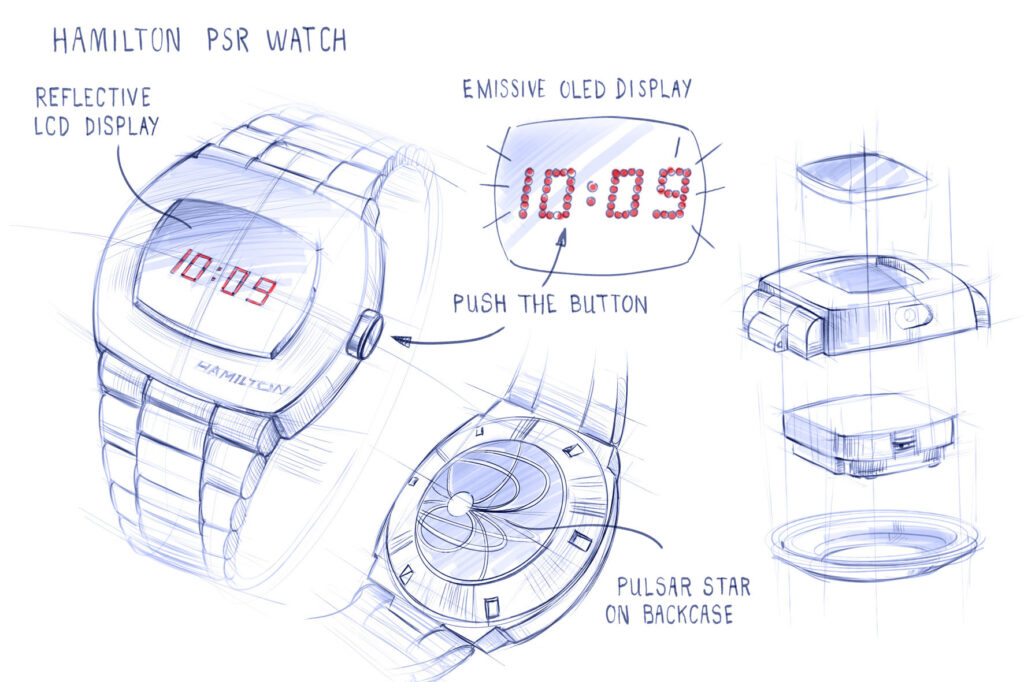
The history of the Hamilton PSR is ultimately a fascinating insight into the world of digital watches. The long journey of the timepiece, which began over 50 years ago, has also taken the path of limited-edition models that have become highly sought after. Its classic and vintage style and its space-age-inspired aesthetics still give it a timeless mood today, assuring that future that short battery life seemed to have denied it, just five years after its launch. Congratulations to Hamilton!
By Davide Passoni

